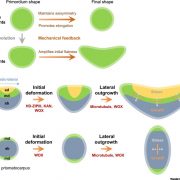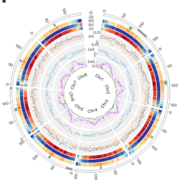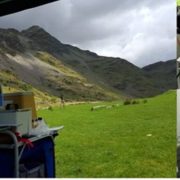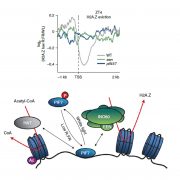Genomes of subaerial Zygnematophyceae provide insights into land plant evolution ($) (Cell)
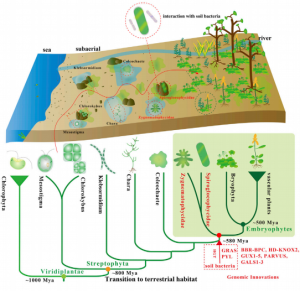 The availability of charophyte algae genomic information is helping to understand how the plant transition to a terrestrial environment occurred at the molecular level. Here, Cheng et al. are releasing two genomes from the Zygnematophyceae clade (Spirogloea muscicola and Mesotaenium endlicherianum), among the first genomes from this clade, the closest to most land plants (embryophytes). In contrast to other charophytes, these species can live outside the water environment. As it was deduced before from transcriptomes, key components of the genetic toolkit associated with land life have originated in the common ancestor to this clade and embryophytes. Interestingly, this paper sheds light on the origin of the ABA receptors (PYL) and GRAS transcription factors, suggesting they came from a horizontal gene transfer (HGT) event from soil bacteria. They propose that the common ancestor to embryophytes and Zygnematophyceae lived in a terrestrial environment. This study raises questions about the hypothesis that most genetic innovations evolved in the aquatic environment, and opens a scenario where plants gained genes from HGT while being on the land but before the radiation of embryophytes. (Summary by Facundo Romani) Cell 10.1016/j.cell.2019.10.019
The availability of charophyte algae genomic information is helping to understand how the plant transition to a terrestrial environment occurred at the molecular level. Here, Cheng et al. are releasing two genomes from the Zygnematophyceae clade (Spirogloea muscicola and Mesotaenium endlicherianum), among the first genomes from this clade, the closest to most land plants (embryophytes). In contrast to other charophytes, these species can live outside the water environment. As it was deduced before from transcriptomes, key components of the genetic toolkit associated with land life have originated in the common ancestor to this clade and embryophytes. Interestingly, this paper sheds light on the origin of the ABA receptors (PYL) and GRAS transcription factors, suggesting they came from a horizontal gene transfer (HGT) event from soil bacteria. They propose that the common ancestor to embryophytes and Zygnematophyceae lived in a terrestrial environment. This study raises questions about the hypothesis that most genetic innovations evolved in the aquatic environment, and opens a scenario where plants gained genes from HGT while being on the land but before the radiation of embryophytes. (Summary by Facundo Romani) Cell 10.1016/j.cell.2019.10.019


